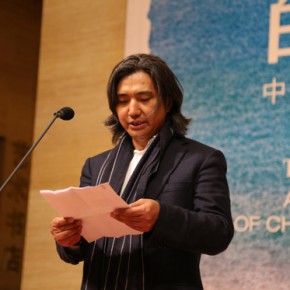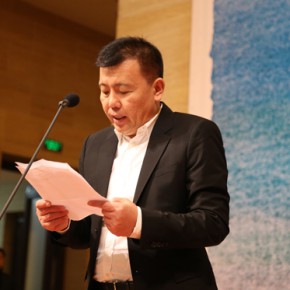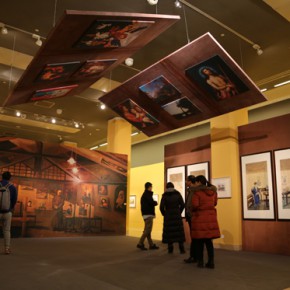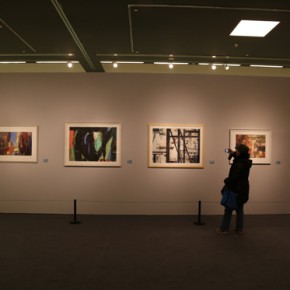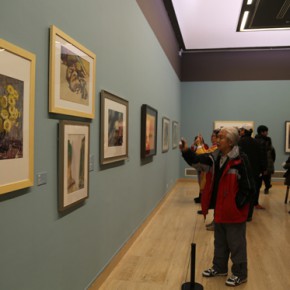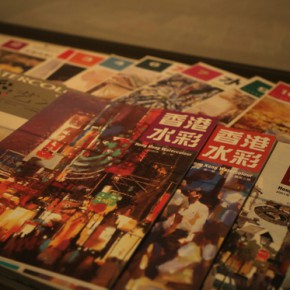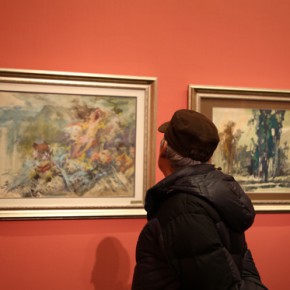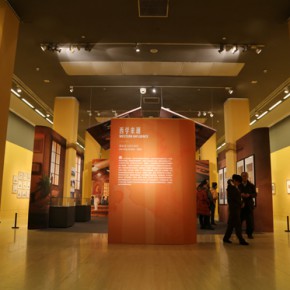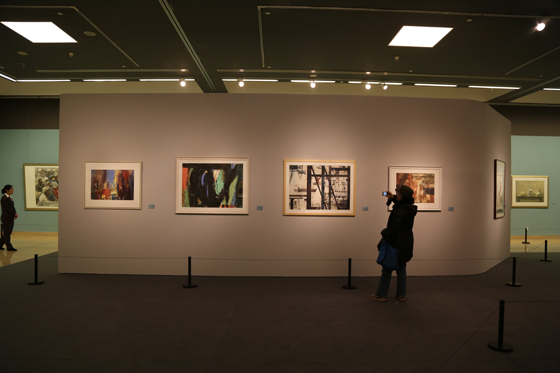
After nearly two years of preparation and planning, hosted by the Department of Arts of the Ministry of Culture, the People’s Republic of China, Qingdao Municipal People’s Government, National Art Museum of China, Chinese Artists Association and CAFA, organized by the National Research Center for Contemporary Art, the Watercolor Art Committee of China Artists Association, the School of Urban Design, CAFA, Qingdao Bureau of Culture, Broadcasting, Television and News, Qingdao Art Museum, China (Qingdao) Watercolor Museum (in preparation), “The Age of Process – An Academic Exhibition on the History of Chinese Watercolor” opened at the National Art Museum of China on January 23, 2015. It is one of the largest exhibitions on watercolor based on the research of the developing history of Chinese watercolor art, bringing together nearly 700 outstanding works by more than 300 artists, and more than 100 precious archived pieces which debut at the same time, to showcase the history and achievements of Chinese watercolor art over the last 100 years.
Zhu Di, Director of the Department of Arts of the Ministry of Culture, Wu Weishan, Director of the National Art Museum of China, Fan Di’an, President of CAFA, Xu Li, Deputy Party Secretary and Secretary General of China Artists Association, Shao Dazhen, a professor of CAFA, a famous art critic, Li Ming, Deputy Minister of the Qingdao Municipal Department of Publicity, Party Secretary and Director of Qingdao Municipal Bureau of Culture, Broadcasting and News, Hao Qi, Director of Qingdao Art Museum and other guests attended the opening ceremony. The opening ceremony was presided over by Ma Shulin, Deputy Director of National Art Museum of China with Wu Weishan, Li Ming and Fan Di’an respectively giving a speech.
Watercolor is one of the major types of art creation, since missionaries came to China to teach Western Painting in 1715, it is the 300th year that watercolor was introduced to China, the developing context of Chinese watercolor art is clear and unique over the recent 100 years, and has an important influence on modern Chinese art. As an exhibition on academic research, the exhibition planning team, experts and scholars combed through, analyzed and studied the historical process of the Chinese watercolor starting from the introduction and improvement, to its’ development and prosperity, on the basis of searching for a large amount of literature and extensively collecting works, it extracts the structure and content of the exhibition, to form a visual and readable grand epic on “The Age of Progress”, centrally embodying the academic characteristics of the three aspects: first of all, it is the first exhibition focusing on the history of one hundred years of Chinese watercolor art, the main exhibiting contents are representative works of watercolor through various periods, combined with related literature and archived material, to present the developing history of Chinese watercolor art over the last 100 years. Secondly, the exhibition places the 100 years of watercolor art within the background of the development of Chinese art and even Chinese society in the 20th century, to reveal the creative characteristics of watercolor through different periods, to explore the influence of watercolor art on modem Chinese art and the explorative practice of the watercolor painters faced with issues around China and the West, ancient and modern. Thirdly, the exhibition pays attention to the discovery of the hidden history. Over the past years, a large number of painters’ artistic achievements and creations were buried in the depth of history, covering the original historical value and academic status, and the history of watercolor painting which also faces a similar situation. In view of this situation, the exhibition by deeply digging to collect works which have never been on display publicly, including the first featured famous artists’ works and a lot of wonderful historical literature which are on show for the first time.
The characteristics to display the exhibition use an historical narrative combined with a case analysis to build the exhibition structure. Through the cased exhibition section of “Masters’ Elegant Works” and 5 historical chapters including “The Trend to Learn from the West” (the late Qing Dynasty to the 1920s), “The Local Consciousness” (from 1930 to 1948), “The New Meteorology” (from 1949 to 1978), “The Journey of Renaissance” (from 1979 to 1990), “Multidimensional Visions” (since 1991 till now) , to reveal the historical context of the artistic development of watercolor over the last 100 years.
The exhibition also builds the academic foundation for the China (Qingdao) Watercolor Museum that is going to be established, and it will continue to February 8, and will be moved to a showcase at Qingdao Art Museum after the end of the exhibition.
Courtesy of the artists and the National Art Museum of China, translated by Chen Peihua/CAFA ART INFO
For further information please visit www.namoc.org.


